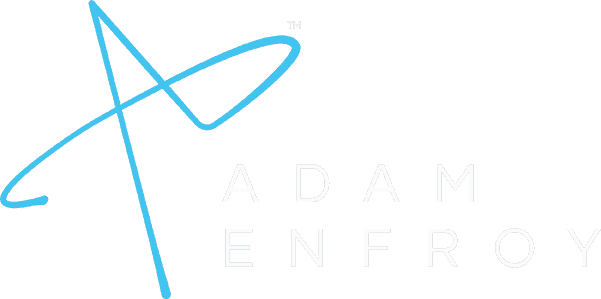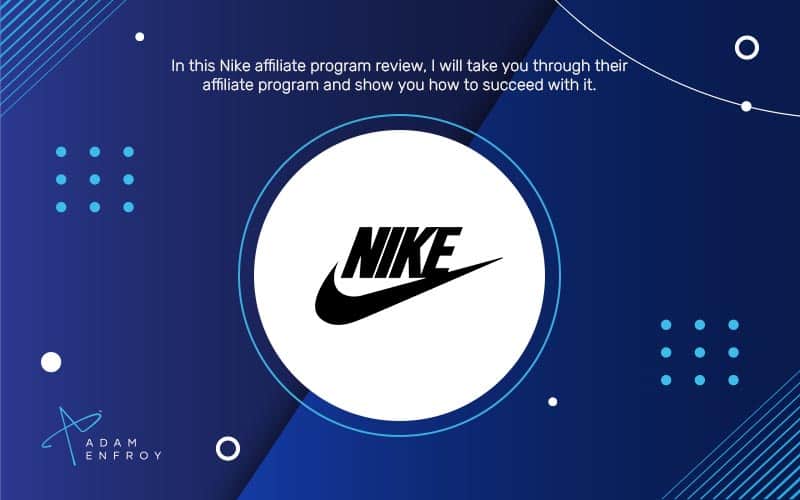The Step-By-Step Guide To Creating A Blog Business Plan

Thinking about starting a blog?
Having a business plan is like your favorite GPS app (whichever you fancy, I’m not here to incite a Google Maps vs. Waze debate).
It guides you around the pot-holes, helps you steer clear of the congested lanes, and ensures you reach your destination most effectively.
You’re probably thinking, “But, I’m just starting a small blog, not Amazon 2.0. Do I really need a business plan?”
To that, I say, resoundingly, “YES!”
A business plan is like your secret weapon to side hustle success.
It keeps you on track, keeps the chaos at bay, and best of all, it’s customizable to you and your aspirations.
It’s not just about having blog ideas or setting goals but also about mapping the path to achieve them.
In this blog post, I’ll help you through the steps of creating a business plan tailored just for your blog.
- Steps To Create A Killer Blog Business Plan
- Tips For Establishing Long-Term Objectives
- Additional Blogging Business Plan Tips
- Analyzing Your Competitors For Blogging Success
- A Step-By-Step Guide to Launching Your Blog
- How To Increase Traffic To Your Blog For Profit
- Social Media Promotion For Your Blog
- Building And Nurturing An Email List
- Planning For Blog Growth And Scalability
- Wrap Up.
Steps To Create A Killer Blog Business Plan
The first and foremost thing to consider when creating a blog business plan is to define your niche.
Identifying your niche means specifying the topic you want to write about and who your target audience is.
Choosing a topic that you’re knowledgeable and passionate about and resonates with your audience is crucial.
Once you’ve identified your niche, research your competition and identify what makes your blog unique.
The next step is to develop a content strategy that aligns with your niche and blog goals.
A content strategy involves planning for your blog posts, including the type of content you’ll write, the posting frequency, and how you’ll promote your content.
You should also consider the tone of voice you want to use, the length of your blog posts, and the format of your content.
Blogging is not just about writing content; it’s also about promoting it.
Social media is a powerful tool to drive traffic to your blog and grow your audience.
Thus, developing a social media strategy that supports your blog goals is essential.
Create social media profiles across platforms like Facebook, Twitter, Instagram, LinkedIn, and Pinterest.
Additionally, consider the type of content you want to post, the timing, and relevant hashtags.
Once you’ve established your content and social media strategy, the next step is to consider how you’ll monetize your blog.
There are several ways to generate revenue from your blog, such as affiliate marketing, sponsored posts, advertising, and selling digital or physical products.
You should identify which monetization strategy aligns with your niche, audience, and blog goals.
Lastly, setting key performance indicators (KPIs) to measure your progress and success is crucial when creating a blog business plan.
KPIs are specific metrics that you can track, such as traffic, engagement, revenue, and email subscribers.
You should monitor these metrics regularly and adjust your plan.
Tips For Establishing Long-Term Objectives
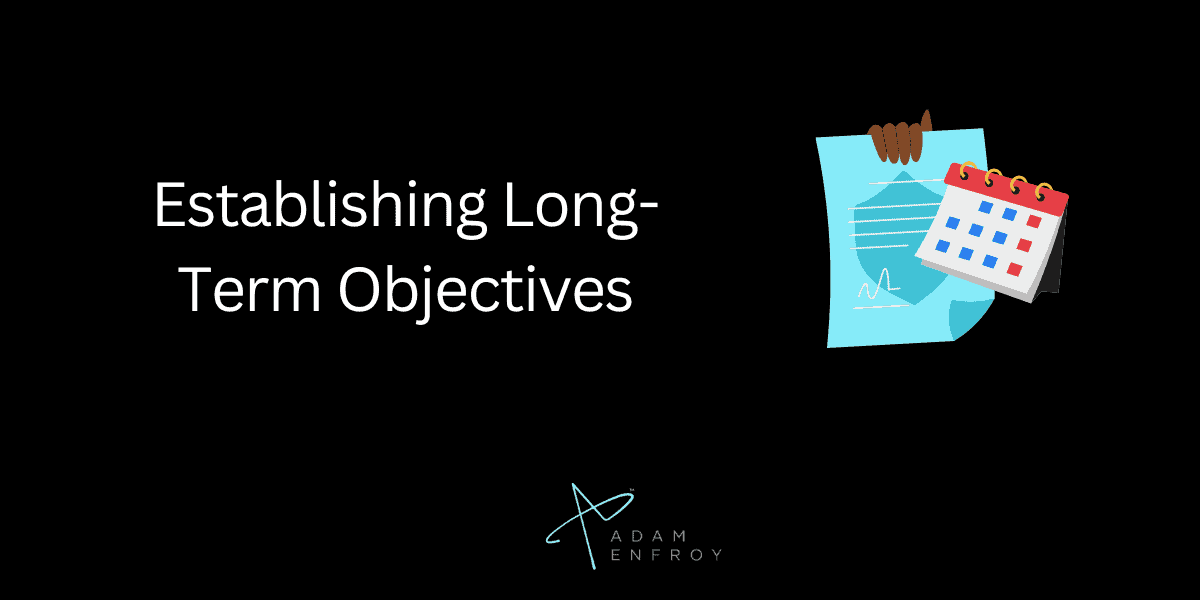
Creating achievable long-term objectives requires careful planning, strategic thinking, and an eye for detail.
Let’s explore some top tips for establishing and working towards these goals.
Clearly Define Your Objectives
The first step in establishing long-term objectives is understanding your goals.
Define your objectives in specific, measurable terms, and make sure they align with your business or blog’s mission.
Objectives should be not only financial but also qualitative.
How will you measure success?
What milestones will you need to achieve along the way?
Having clear objectives will help you make informed decisions and prioritize tasks.
Conduct A SWOT Analysis
Before creating a strategy, it’s crucial to understand your business or blog’s strengths, weaknesses, opportunities, and threats.
Conducting a SWOT (Strengths, Weaknesses, Opportunities, and Threats) analysis will help you identify internal and external factors that can impact your long-term objectives.
By understanding your strengths, you can leverage them to achieve your goals.
You can develop contingency plans to overcome challenges by recognizing weaknesses and threats.
Create A Strategic Plan
Create a strategic plan once you have defined your objectives and conducted a SWOT analysis.
A strategic plan should identify your goals, tactics, timelines, and resources to achieve long-term objectives.
The plan should also anticipate potential challenges and include contingency business plans.
Ensure the plan is flexible enough to adapt to changes in the market or industry.
Include an executive summary as well to provide a clear plan overview.
Celebrate Small Victories
Achieving long-term objectives can be a lengthy process.
Remember to celebrate small victories along the way.
Celebrating small successes can boost morale and motivate you to keep moving forward.
Recognizing your team’s achievements can also help build a collaborative and positive work culture.
Persevere Through Challenges
Finally, it’s essential to persevere through challenges to achieve long-term objectives.
Creating a strategy does not guarantee success.
Challenges and setbacks will inevitably occur.
Focus on your objectives, and have the flexibility to pivot your tactics when necessary.
Use challenges as an opportunity to learn and improve.
Additional Blogging Business Plan Tips
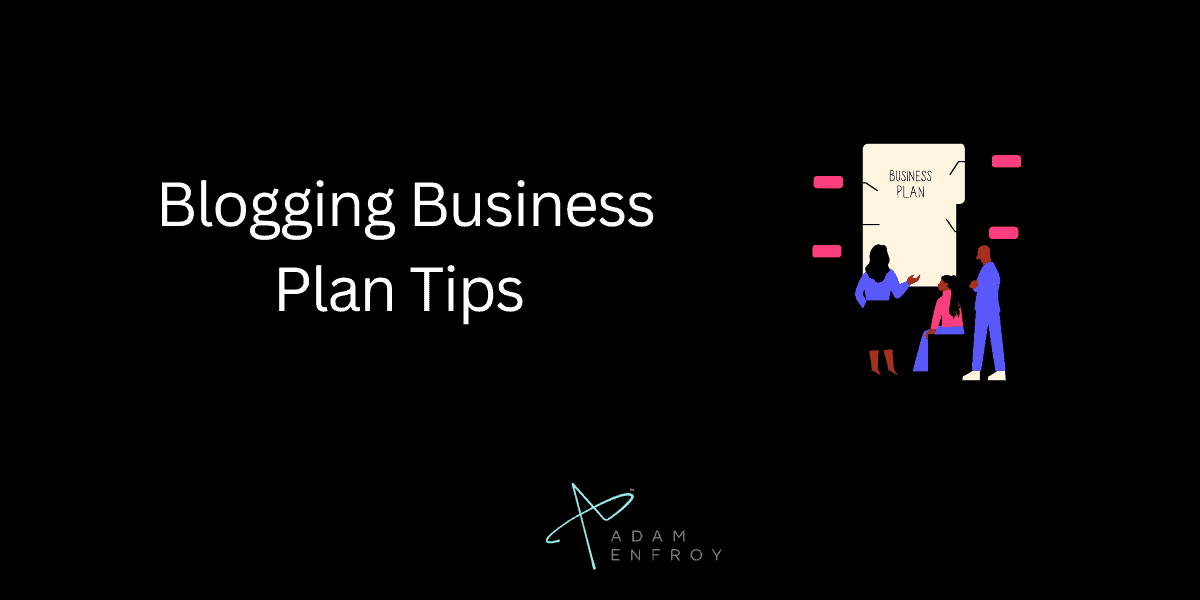
Here are a few more tips to keep in mind when creating a blog business plan:
Craft Your Mission Statement
Before you begin blogging, determine what your mission statement for the blog is.
Your statement would summarize what your blog is about, what your goal is, and how you want to reach your goal.
This statement can keep you focused and motivated.
Pinpoint Your Niche
Finding your niche is crucial.
You can’t just write about everything and expect a high traffic flow.
The more specific your focus, the more likely your blog will be successful.
People interested in the topics you’re writing about will stay on the blog longer and engage with the content.
A strong understanding of your audience will lead to more advertising and product sales, generating more revenue for your business.
Create Engaging Content
Your blog’s success mainly depends on its content’s quality.
Create content to educate or entertain your target audience or inspire them with your eye-catching visuals.
Ensure the blog’s content is readable and user-friendly to create a fantastic experience for your readers.
You want your readers to keep coming back to see what’s new, so post and update your content regularly.
Determine Monetization Channels
You can earn through a blog business in various ways.
That is, through sponsorships, ad revenues, affiliate marketing, selling ebooks, merchandise, or courses, among others.
Monetization options depend on the niche and audience.
Consider all available options and select monetization channels that work best for your blog.
Set Specific Goals
Setting achievable and specific goals for the blog will help identify where to focus your effort.
A blog business plan should include the following:
- A rough timeline of how often you will post.
- The number of subscribers you expect.
- Your targeted income.
Goals can ensure that you stay on track, reach your milestones on time, and measure the blog’s success as it grows.
Analyzing Your Competitors For Blogging Success
Analyzing your competition provides valuable insights into your niche, audience, and potential opportunities to improve your blog.
One of the first steps in analyzing your competition is conducting keyword research.
It allows you to see what keywords your competitors are ranking for and what potential opportunities exist for you to create content that can rank higher.
Use free AI-powered tools like Google Keyword Planner or Ubersuggest to identify valuable and high-ROI keywords you can focus on in your content.
You can discover their strengths and weaknesses by thoroughly analyzing your competitors’ blogs.
Are they producing engaging content that is shared on various social media platforms?
Do they have a strong email marketing strategy?
Are they involved in affiliate marketing?
Identifying these strengths can help you replicate their successes while recognizing their weaknesses.
You’ll then address potential gaps or opportunities.
It can be helpful to dive into your competition’s monetization techniques.
Do they rely heavily on advertising or affiliate marketing?
Are they selling their products or services?
Understanding what strategies have been successful for other bloggers in your field can be a valuable tool in shaping your business plan.
Knowing where your competitors’ traffic is coming from can offer insights into how to drive traffic to your blog.
Look at sources like social media, email marketing, search engines, and referrals to see where your competition is getting traffic.
You can then implement similar strategies to drive traffic to your blog.
One of the most important aspects of blogging is creating engaging and helpful content for your readers.
Analyzing your competitors’ content lets you understand what topics resonate with your target audience.
Look for ways to improve upon your competitors’ content by adding a unique perspective or delving deeper into a particular topic.
A Step-By-Step Guide to Launching Your Blog

Once you have your plan and content strategy sorted, it is time to create your blog.
Here are the steps you need to follow:
Choose Your Platform and Hosting Provider
Before starting your blog, choose your platform and hosting provider.
When selecting your platform, consider what kind of blog you want to run, your budget, and your technical skills.
WordPress is one of the most popular platforms that is easy to use and customizable.
Numerous hosting provider options are available, including Bluehost, SiteGround, and DreamHost.
Do your research to find a reliable, secure provider that aligns with your budget.
Plan Your Technical and Design Strategy
Plan your technical and design strategy once you have selected your platform and hosting provider.
The technical aspects of your blog include setting up your domain, installing necessary plugins, and optimizing your site’s performance.
In terms of design, this involves identifying your brand, creating a website layout, and designing your visual content (like your website banners or post images).
Planning these aspects will help streamline the building process and ensure your blog aligns with your vision.
Content Creation And Proofing
Creating quality content is essential to your blog’s success.
Use your blog’s mission statement and brand guidelines to develop a content strategy enticing your target audience.
Consider including evergreen and up-to-date information and incorporating your unique voice and perspective into your posts.
Be sure to proofread your posts before publishing them, or better yet, consider hiring a proofreader or editor to help ensure clarity, grammar, and accuracy in your content.
Consistency Is Key
Once your blog is up and running, maintaining momentum is the key to continued success.
Engaging your audience and building trust requires creating and sticking to a content calendar.
Ensure your content promotes your brand values and mission statement and provides value to your readers.
And remember to build your audience by promoting your blog posts through social media channels and relevant platforms where your target audience may be hanging out.
Create An Accounting Plan
While it’s important to focus on creating valuable content for your blog, you must also keep an eye on your finances.
Tracking your expenses and your revenue can give you a better idea of how your blog is performing.
Start by creating a budget that includes hosting fees, domain and design costs, and content creation fees.
Look into using reliable accounting software to help keep your records organized, and if necessary, consider hiring an external professional to assist you in overseeing your finances.
How To Increase Traffic To Your Blog For Profit
Creating high-quality content is key to attracting and retaining your audience.
Start by researching your target audience’s interests and pain points.
Find out what topics resonate with them and create unique, engaging, and informative content.
Remember that your content should reflect your brand’s voice and values.
Utilize a mix of text, images, and videos to capture your audience’s attention and provide value with each post.
Remember that quality always trumps quantity, so focus on creating fewer, comprehensive blog posts to build trust and credibility with your readers.
Search engine optimization (SEO) is a strategy that helps your blog rank higher in search engines’ results pages.
Start by conducting keyword research to identify the keywords your target audience is searching for.
Then, optimize your blog post titles, meta descriptions, URLs, and content with those keywords.
Ensure your site’s navigation is simple and easy for readers to use.
Additionally, make sure your site is mobile-friendly and has a fast loading speed.
SEO takes time and effort, but the results can be profound.
You can also invest in paid search ads to bring targeted visitors to your blog.
Collaborating with other bloggers and websites can be an effective way to increase your reach.
Identify blogs and sites that cater to your target audience and reach out to them.
Offer to write a guest post, exchange links, or collaborate on a project.
Additionally, guest posting on other blogs gives you access to their audience and can help to establish yourself as an authority in your field.
Be selective in your partnerships and aim to maintain long-term relationships that will benefit your blog.
Understanding SEO For Your Blog
Understanding SEO for your blog is crucial for any blogger wanting to get noticed online.
Successful bloggers know that having a comprehensive understanding of SEO principles and the use of keywords is vital for ensuring your blog content gets the desired page views.
Google Analytics is an in-depth tool that helps bloggers keep track of their blog’s performance and identify areas that need improvement.
Competitive analysis and target market analysis are critical components of a successful blog business plan.
Luckily, free blog business plan templates incorporating SEO optimization tips for blogs are available online.
Incorporating these SEO optimization tips in your business plan can help you target the right audience, increase traffic, and monetize your blog.
Monitoring SEO performance helps bloggers identify what areas need tweaking and what works.
By implementing SEO optimization strategies in your blog business plan, you can ensure the longevity and success of your blog.
Social Media Promotion For Your Blog
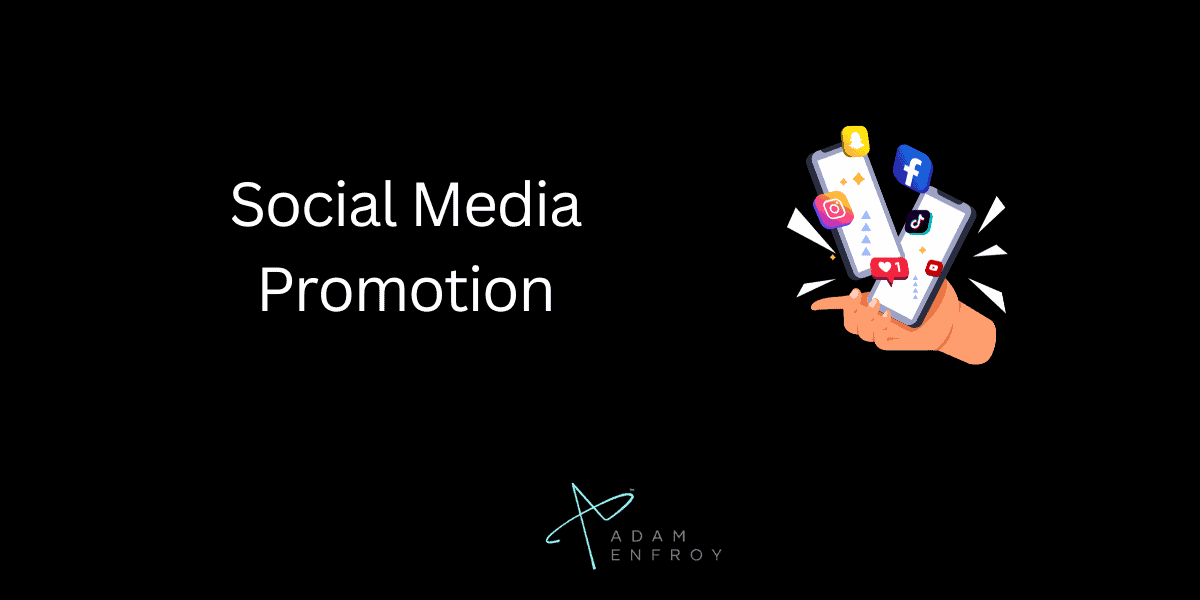
When creating a successful business plan for a blog, one must consider a thorough marketing plan, especially social media promotion.
We cannot overstate the importance of social media marketing; it’s one of the most effective tools for reaching a broad audience.
Selecting the right social media platforms is crucial, as different demographics prefer different platforms.
By understanding the demographics of your target audience, you can select the appropriate social media platforms to focus your efforts on.
Influencers can also be a valuable asset in promoting your blog’s brand, as they have a large following and can boost your content to their audience.
However, selecting influencers that align with your blog’s brand and values is important.
As new bloggers, entrepreneurs, and even full-time business owners turn to social media as a platform to connect with their audience, there is a growing need to create social media content that reflects your blog.
Consider your blog’s look, tone, and feel when creating social media content.
Engaging your audience on social media is also crucial, as it builds a community of loyal followers and helps to increase your blog’s visibility.
Live streams, webinars, and even podcasts are all effective ways to engage with your audience on social media and provide value to your followers.
Building And Nurturing An Email List
Building and nurturing an email list is crucial for the success of any online business, including small businesses, beginners, and seasoned entrepreneurs.
An email list is a valuable asset that provides a direct line of communication to potential customers and clients.
To start building your email list, you’ll need to create a lead magnet, such as a free template or ebook, that encourages people to opt-in to your list.
This roadmap will help ensure that your email list grows naturally and effectively.
Once you’ve captured email addresses, nurture your subscribers and engage with them regularly.
One strategy is to send weekly or bi-weekly newsletters that share helpful resources, business ideas, and income reports.
You can also offer exclusive discounts, early access to your online courses, and other perks that show your subscribers you value their support.
Measuring the success of your email marketing efforts is critical.
You can use analytics tools to track open, click-through, and conversion rates to see how your subscribers engage with your content.
Using these strategies, you can turn your email list into a powerful tool for growing a successful business.
Planning For Blog Growth And Scalability
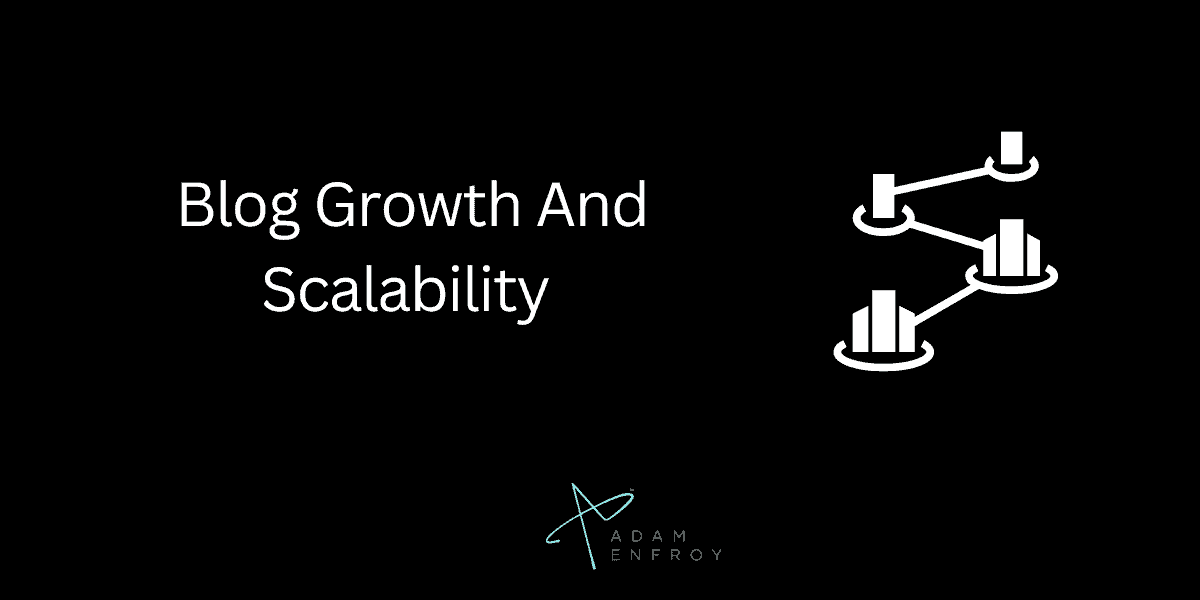
When planning for blog growth and scalability, several key considerations can help you become a successful blogger and turn your startup into a profitable online business.
Creating a blog business plan is essential, as this will help you to define your vision statement, market research, growth strategies, and monetization strategies.
Your blog can serve as a section of your business plan, and it is essential to consider the different stages of blog growth as you develop your content strategy.
Tutorials and guest posts can be valuable tools for attracting new readers to your site, while adapting your content strategy to meet the needs of your ideal reader is crucial for sustained growth.
Infrastructure considerations are also important, as you may need to upgrade your hosting, invest in a reliable blog name, or consider outsourcing some of your tasks as your traffic increases.
Long-term financial planning is also essential for blog growth, and you should constantly think about how to turn your blog into a profitable business.
With the right approach, a well-developed blog business plan template, and a focus on growth strategies that are both sustainable and scalable, you can build a successful online business that will stand the test of time.
Wrap Up.
A solid business plan and a comprehensive and targeted marketing strategy are essential for driving traffic to your blog.
Utilize SEO, social media, and collaboration with other bloggers to increase visibility and engagement.
Monitor your progress and adjust your tactics accordingly to optimize the results and get the most out of your efforts.
You can create an effective online presence for your blog with hard work and dedication.
Further reading on AdamEnfroy.com: As a business owner, you might choose various elements of your blog to outsource.
Knowing which components to outsource and which to keep in-house can remove a lot of the strain from building an online business.
Finally, check out these online blogging courses to learn more about how to start a successful blog.
